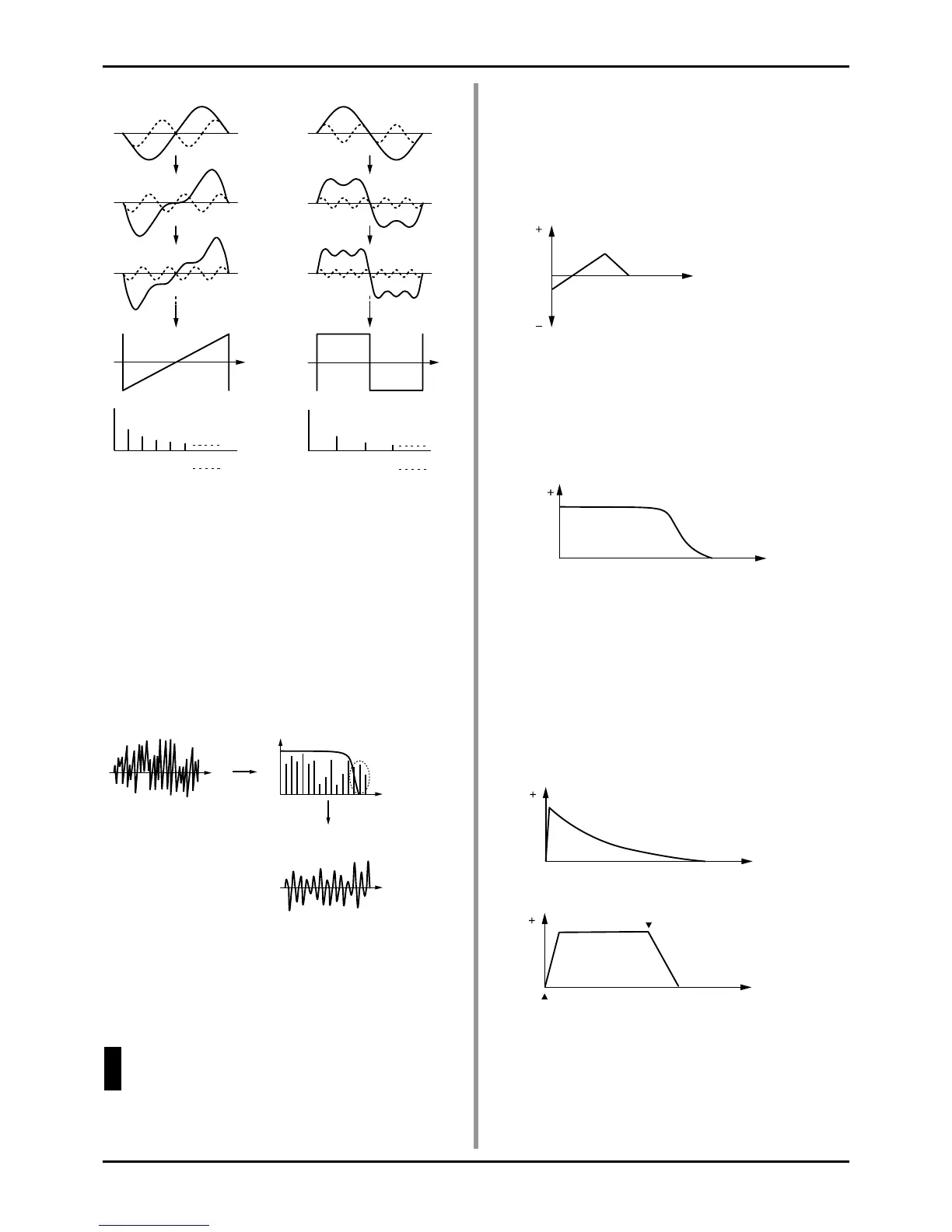The more high-frequency partials are included in a sound,
the brighter it will appear. The more low-frequency partials
are included in a sound, the mellower (darker) it will
appear. The technique of cutting these partials to modify
the brightness (= waveform) of the sound is known as “sub-
tractive synthesis,” and is one of the most common methods
of synthesis. This means that synthesizers which use this
method of synthesis need to contain waveforms which
include a rich assortment of partials. By using a filter to
selectively cut these partials, the brightness of the sound
can be modified.
➜ FILTER [TYPE]/[CUTOFF FREQ]/[RESONANCE]
[-12dB/-24dB]/[KEY FOLLOW] (p.73, 74)
In addition to the filter, the waveform can be modified by
Sync, Ring Modulator, or Cross Modulation to modify the
waveform in various ways.
Time-Variant Changes in the
Sound (Envelope)
On any acoustic instrument, the waveform goes through
various changes between the beginning and the end of the
note. This is because each of the three elements of sound
(pitch, brightness and volume) change as time passes.
These time-variant changes are referred to as the “enve-
lope,” and every natural instrument has its own characteris-
tic envelope.
■ Pitch envelope
Brass instruments such as the trumpet often have a slight
variance in pitch when the musician first begins to blow. On
a synthesizer, this “time-variant pitch change” is created by
the Pitch Envelope.
➜ PITCH ENVELOPE [A]/[D] (p.72)
■ Filter envelope
Notes on a piano etc. contain the most partials (i.e., are
brightest) when the note begins, and as the sound decays,
the upper partials gradually diminish, causing the tone to
become more mellow (darker). On a synthesizer, this “time-
variant change in brightness” is created by the Filter
Envelope.
➜ FILTER ENVELOPE [A]/[D]/[S]/[R] (p.75)
■ Amplifier envelope
On a piano, the sound begins the instant that the key is
pressed, and gradually diminishes in volume. However on
an organ, the same volume is maintained as long as the key
is pressed. On a synthesizer, this type of “time-variant
change in volume” is created by the Amplifier Envelope.
➜ AMP ENVELOPE [A]/[D]/[S]/[R] (p.76)

